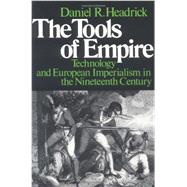| Introduction: Technology, Imperialism, and History Imperialism and technology. Historiography of the causes of imperialism. The place of technology in the literature of imperialism. The causes of this disregard. A new model of causality. Stages of imperialism and the organization of this book. | 3 | (14) | |||
| PART ONE: STEAMBOATS AND QUININE, TOOLS OF PENETRATION | 17 | (66) | |||
|
17 | (26) | |||
|
43 | (15) | |||
|
58 | (25) | |||
| PART TWO: GUNS AND CONQUESTS | 83 | (46) | |||
|
83 | (13) | |||
|
96 | (9) | |||
|
105 | (10) | |||
|
115 | (14) | |||
| PART THREE: THE COMMUNICATIONS REVOLUTION | 129 | (82) | |||
|
129 | (13) | |||
|
142 | (8) | |||
|
150 | (7) | |||
|
157 | (8) | |||
|
165 | (15) | |||
|
180 | (12) | |||
|
192 | (12) | |||
|
204 | (7) | |||
| Bibliographical Essay: | 211 | (4) | |||
| Index: | 215 |









